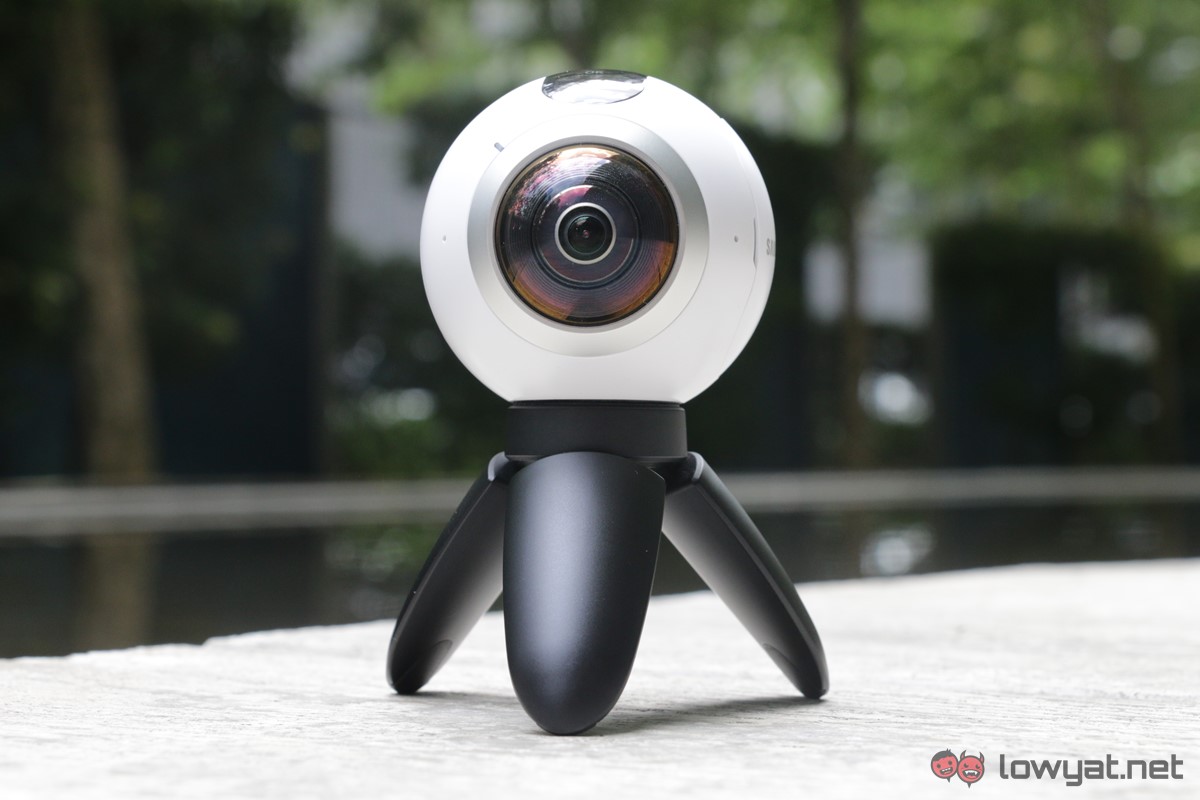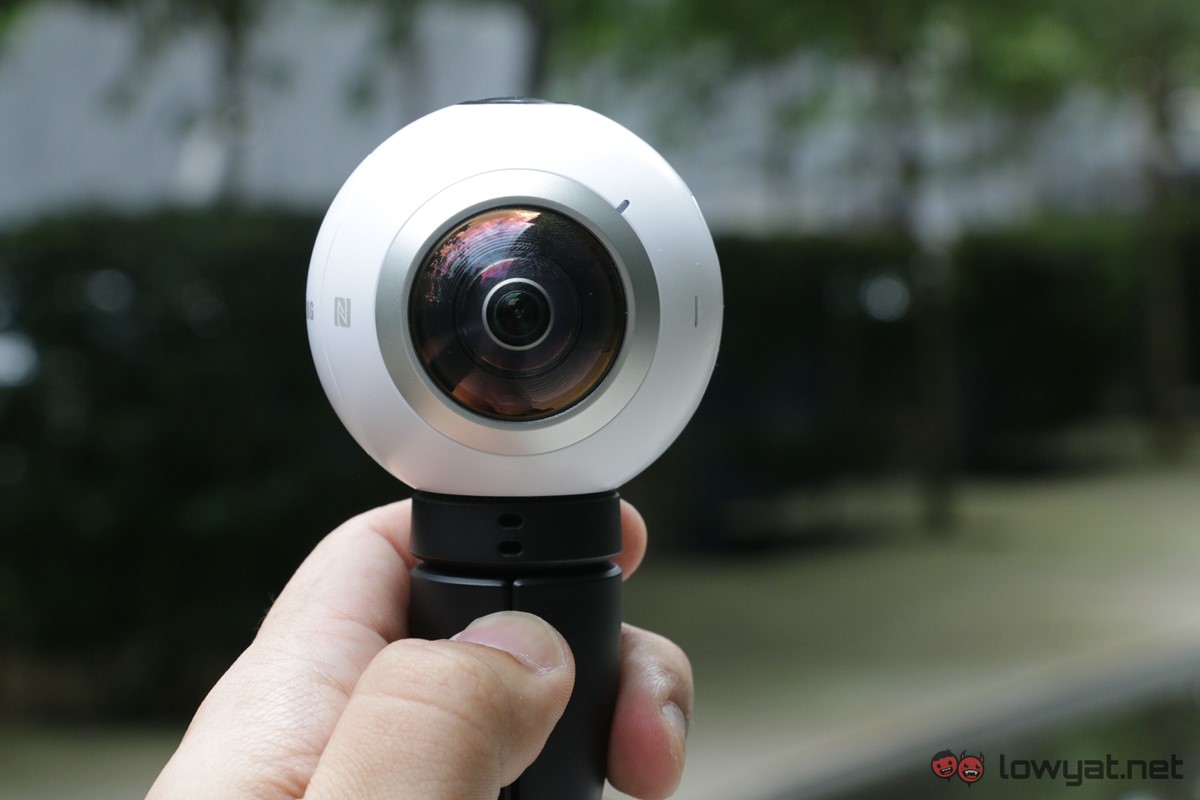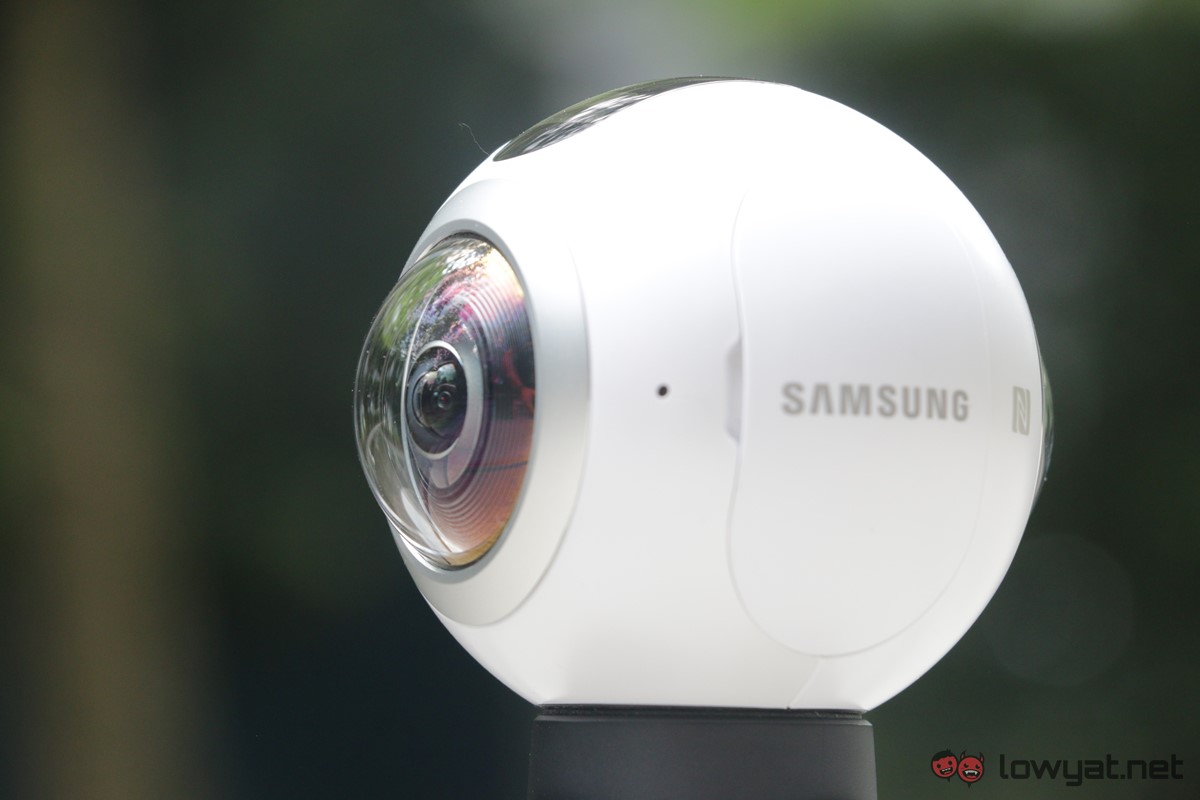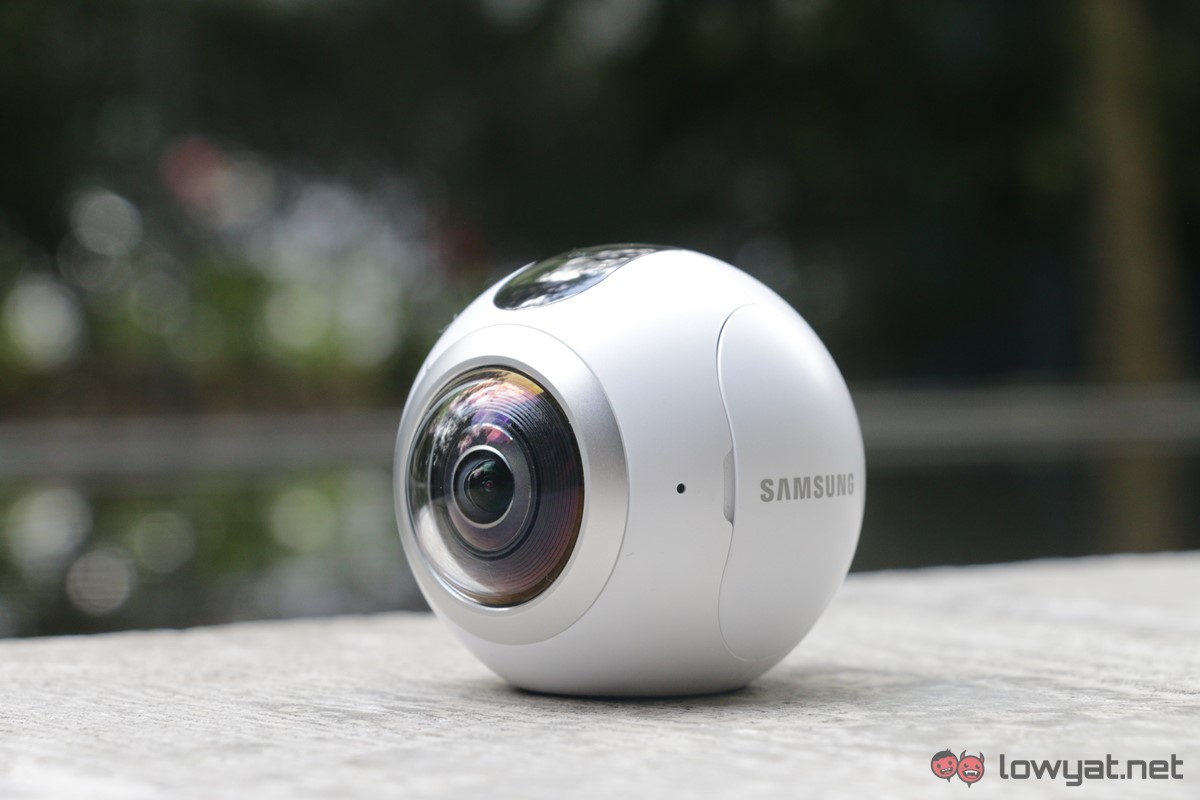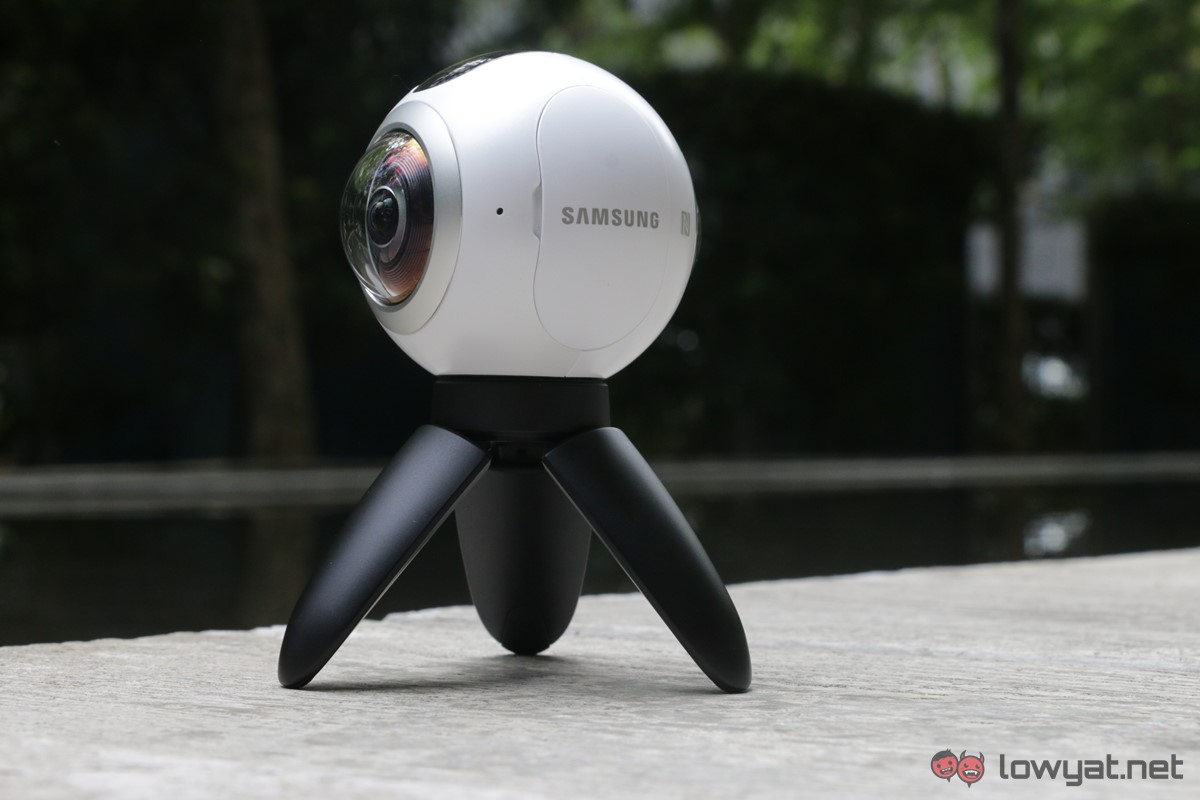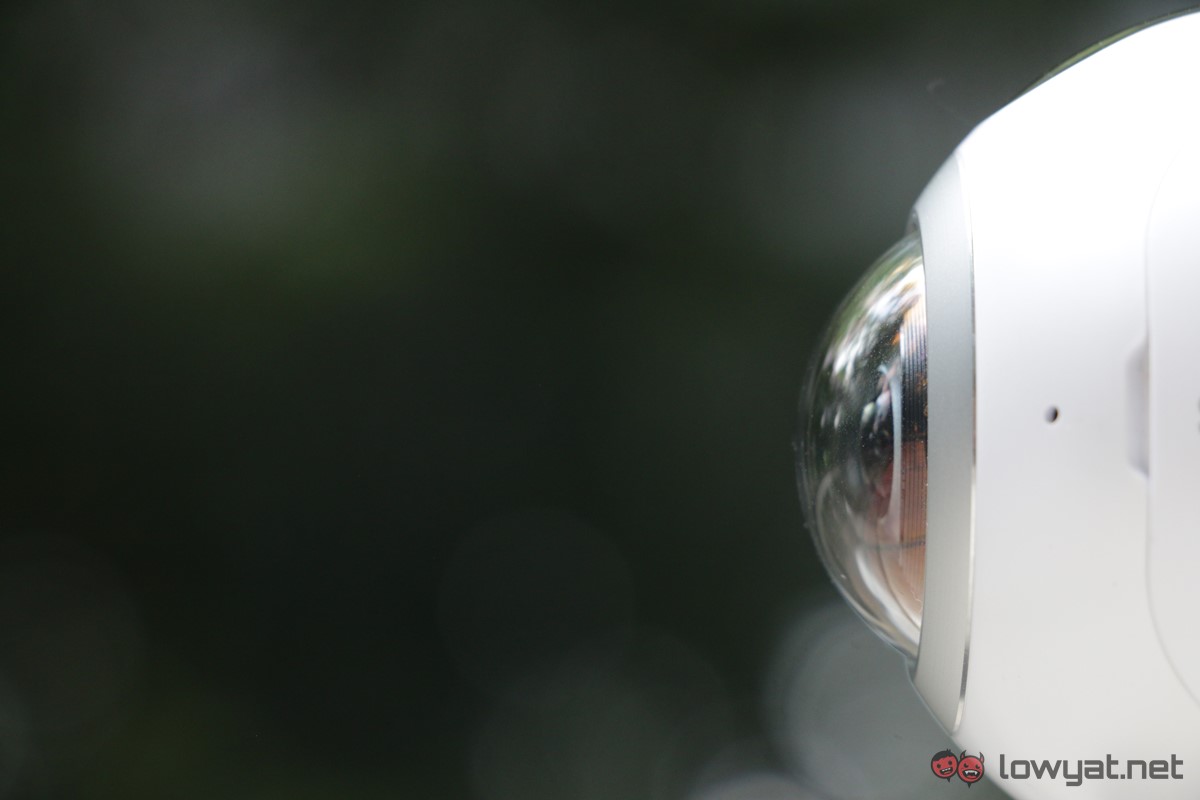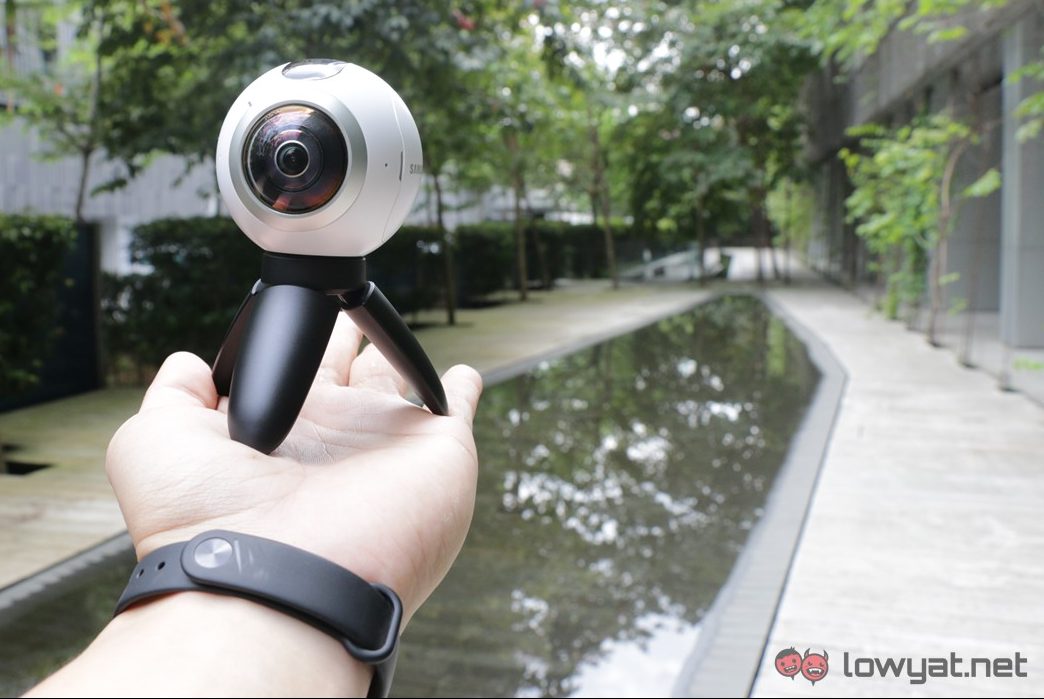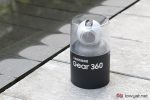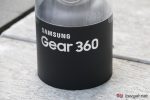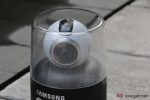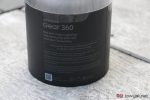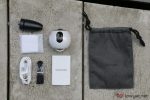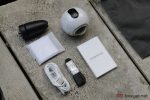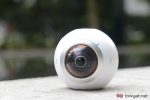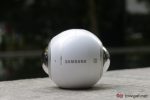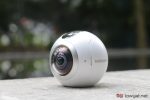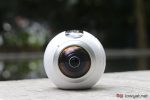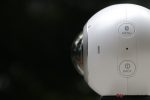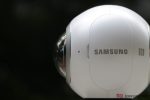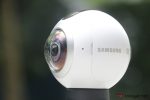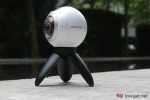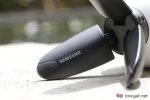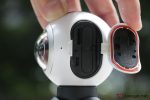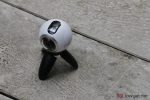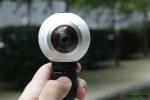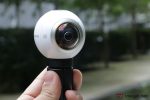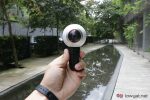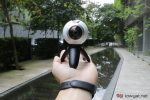Images and videos are great ways to show people what you’ve seen, but what if you could show them what you see right from your point of view? Cameras have come a long way, and today we’re seeing interesting experimentation from companies looking to deliver the next big thing in imaging. The Samsung Gear 360 is one such product.
What Is It?
The Samsung Gear 360 is a spherical, 360 camera that utilises two 180-degree lenses. It stitches data from the two lenses to form a 360-degree photograph or video that can be viewed on your smartphone – you view your surroundings either by swiping the screen with your fingers, or utilising the phone’s gyro and moving it around you, or for the best viewing experience, place the phone into a VR headset.
In terms of specifications, the Samsung Gear 360 houses two CMOS 15MP f/2.0 fisheye lens cameras. Both cameras are capable of taking photos, videos, time-lapse videos, as well as looping videos. On the top, it features a 0.5-inch PMOLED display. The image processing unit is Samsung’s own DRIMe5s chipset paired with 1GB of RAM, while storage options are limited only to a microSD card slot up to 200GB.
For connectivity, the Samsung Gear 360 has dual-band ac Wi-Fi, Bluetooth v4.1, a microUSB 2.0 port, and NFC. The device is powered by a 1,350mAh battery and it weighs 152g (battery inclusive).
Is It Any Good?
The Samsung Gear 360 camera is a great option for those who are looking into producing 360-degree content. Taking it out of the box, pairing it with your phone is extremely easy. You can either tap with NFC to pair your device, or just connect via Bluetooth. Either way, both methods are seamless. From start to finish, pairing was easy, the connection was stable, and even reconnecting was flawless.
In terms of quality, the camera on the Samsung Gear 360 is pretty decent. Photos and videos look fine on smaller screens (like your smartphone), but once you blow it up to a larger display, noise and a lack of detail (especially in video) start becoming apparent.
We put the Gear 360 through its paces for a fun video idea and see how it turned out. Watch the video below and judge for yourself:

Using the Samsung Gear 360 camera with the “Gear 360 Manager” app, you get a lot more features than just start and stop record. You get to play around with many camera options on the camera, and all this is within a very user-friendly UI. Navigation was simple and straightforward, and every setting could be located with ease. The app also gives users the option of using both lenses, or either one of the two at any given time.
There’s also a standard 1/4-inch tripod mount at the bottom of the Gear 360, which allows you to use the camera with any tripod, or the mini foldable one that Samsung includes with every Gear 360.
The Bad Stuff. Tell Me.
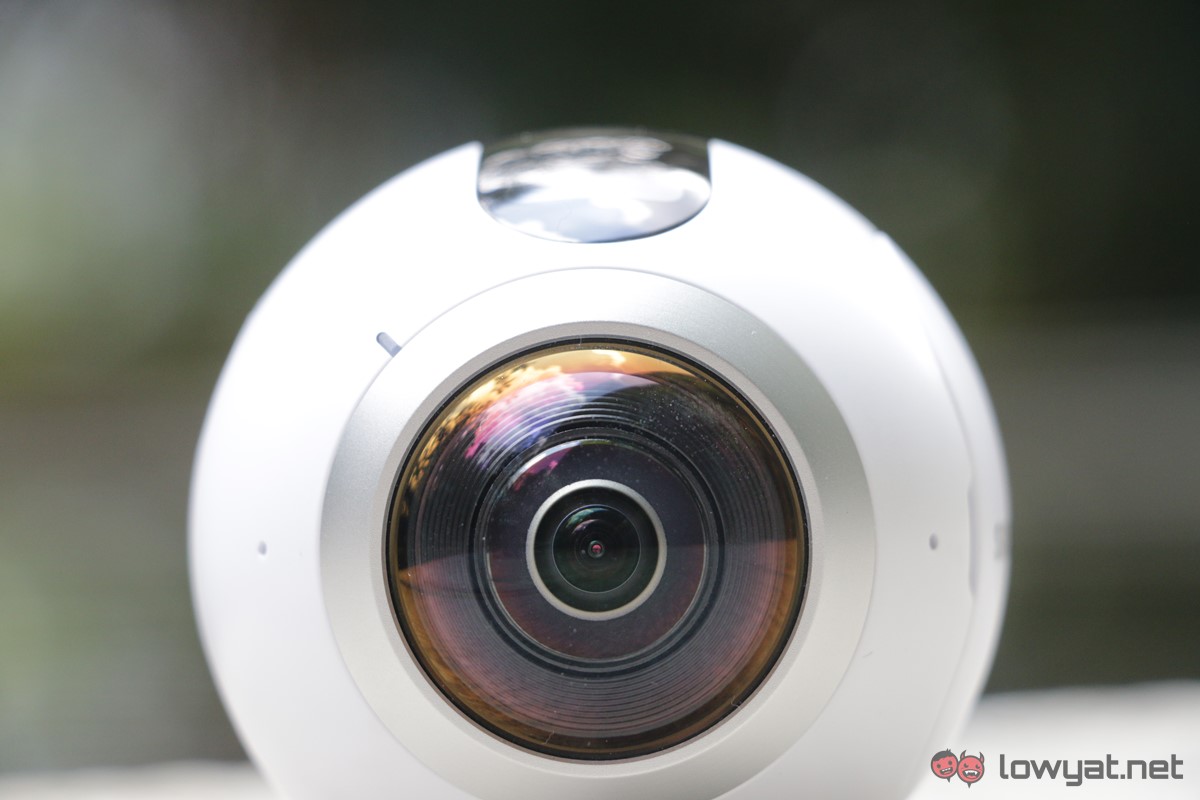
Unfortunately, the Samsung Gear 360 camera (and Gear 360 Manager app) is only compatible with select Samsung devices like the Galaxy Note 5, Galaxy S6, Galaxy S6 edge, Galaxy S7, and Galaxy S7 edge (and presumably the latest flagships from this year). This is likely a hardware-based decision given the processing power required, but the fact that other flagship Android devices (let’s not even mention the iPhone here) are left out does leave a relatively small market for the Gear 360.
As for the device itself, the lens piece of the Gear 360 camera protrudes quite a bit and that makes it extremely prone to smudges and scratches. Because the lens takes up so much real estate on the device, I was always accidentally rubbing my fingers on the lens, which resulted me in constantly wiping the lens clean before every recording. This is where the mini-tripod helps quite a bit: the legs fold together to form a grip.
Stitching of images and videos on the Samsung Gear 360 can be quite iffy as well. There are times when the files get stitched just fine, but there are also times when you’ll find one of the tripod legs appearing out of nowhere at the bottom of the image or video. To be fair, this is a fairly common issue with 360 cameras, and as the technology and algorithm matures, it will hopefully be ironed out.
Now that you’ve taken the photos and recorded the videos you want, it’s going to be quite frustrating to transfer and edit them. Because 360-degree videos aren’t similar to your standard video files, they can only be extracted using the “Gear 360 Action Director”, which is a Windows-only editing software made by Cyberlink. If you wish to use the standard editing software like Adobe Premiere Pro or Sony Vegas 13, you’ll need to convert the footage to be a “flat” video.
When it comes to battery life, the Samsung Gear 360 is capable of long hours of use. We’ve tried an hour of continuous video recording which drained 35% of its battery. To fully deplete the battery, it would take approximately three hours of continuous video recording. That being said, if you’re the type to turn the device on and off without pairing it to a phone, you could easily stretch the battery life over a day and a half.
But because the battery is removable, you could always buy a spare to swap it out and not have to worry too much about battery life – just keep a look out for it in between recordings.
Should I Buy It?
At a retail price of RM1,299, the Samsung Gear 360 camera is definitely an affordable option for a beginner’s first 360 camera. The camera is good, connectivity is hassle-free, and the device itself is dust and water resistant. However, the Gear 360 faces stiff competition from the Ricoh Theta series, the popular choice for 360 camera enthusiasts, where some models are more affordable than Samsung’s offering.
One thing we did realise after using the Gear 360 was that much like USB Type-C, we’re just not there yet. Viewing 360 videos is one thing, but to produce them is another. And while most platforms already support hosting 360 videos, viewing them is quite an awkward affair. 360 videos work best with VR headsets, but would you take a few minutes to locate that headset, strap it on and ensure the lenses are aligned correctly, and then view the footage?
Samsung’s Gear 360 camera is another example of an early adopter product. It feels like a right product that came at the wrong time. But for a first generation product, it’s a solid attempt that covers most bases quite well.
It also means that when (or if) 360-degree content breaks into the mainstream in the future, Samsung already has years of know-how to prepare for it.
Follow us on Instagram, Facebook, Twitter or Telegram for more updates and breaking news.


